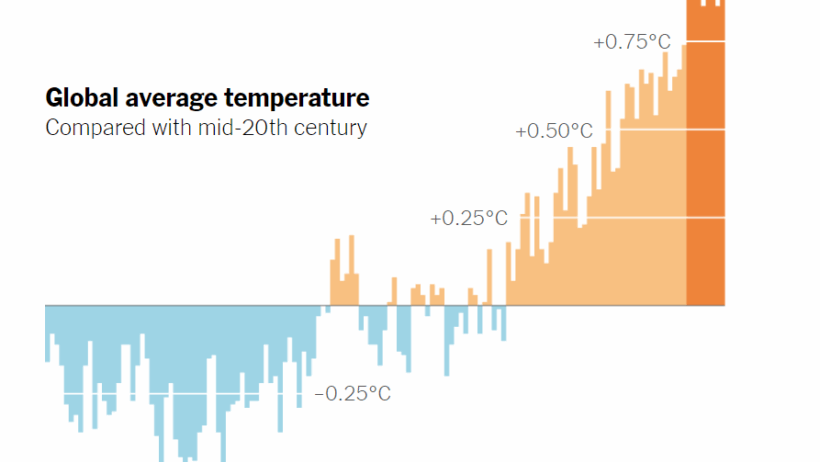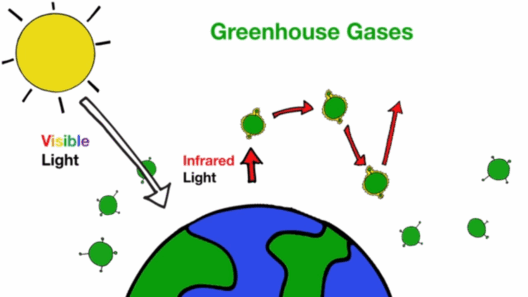The intricate dynamics of our planet’s atmosphere are often overshadowed by the daily ups and downs of local weather. However, beneath the surface of these fleeting shifts lies a profound and unsettling reality: the behavior of the jet stream. This fast-flowing ribbon of air plays a critical role in influencing global weather patterns. As climate change continues to exert its influence, the wobble of the jet stream becomes increasingly pronounced, catalyzing a cascade of severe consequences for ecosystems and human societies alike.
The jet stream is a high-altitude corridor of wind that steers weather systems and is primarily driven by the temperature differential between the equator and the poles. Traditionally, this stream flows in a relatively stable and straight path. However, as global temperatures rise due to ever-increasing greenhouse gas emissions, the polar regions are warming at an unprecedented rate, disrupting these traditional flows. This warming leads to a weakened jet stream. Instead of its usual tight, fast winds, the jet stream starts to exhibit a “wobble” or meandering pattern.
This alteration in the jet stream’s behavior has far-reaching implications for weather systems. The anomalies in the jet stream can result in extended periods of extreme weather conditions, such as prolonged droughts, unseasonable warmth, or relentless storms. Essentially, it creates a situation where weather patterns become less predictable, leading to what some have termed “weather whiplash.” The stark contrast between dry and wet conditions can devastate agriculture, disrupt water supplies, and heighten the risk of wildfires.
One of the most alarming manifestations of the jet stream’s changes can be observed in the frequency and intensity of heat waves. Regions that once enjoyed temperate climates now face sweltering summers that push human and environmental tolerances to their limits. Such extremes are not merely the result of incremental warming; they are exacerbated by the wobbling jet stream, which tends to trap hot air in certain areas, creating a climate scenario with potentially dire consequences.
Conversely, the same wobble can lead to periods of excessive moisture and flooding in other regions. For instance, when the jet stream dips southward, it often pulls in moist air from tropical regions. This can lead to torrential downpours and flooding, as observed in various global locales. Communities that are ill-prepared for such events find themselves grappling with infrastructure failures and loss of life.
The repercussions of the jet stream’s fluctuations extend beyond immediate weather patterns; they ripple through ecosystems, impacting wildlife and plant cycles. Species that rely on seasonal cues for migration or reproduction face increasing uncertainty. The timing of flowering plants, for example, may not align with insect life cycles, leading to a mismatch that threatens food webs and biodiversity.
Furthermore, the agricultural landscape is not immune to these shifts. Farmers rely on predictable weather patterns to plan sowing and harvesting cycles. Erratic weather patterns could lead to crop failures, food shortages, and increased prices, creating a feedback loop of economic instability and heightened food insecurity. As cultivation becomes riskier, the specter of famine looms larger over vulnerable populations.
It is essential to recognize that the implications of the jet stream’s volatility are not confined to local or even national boundaries. Climate change is a global phenomenon, and the disruptions caused by one region can resonate across the planet. As certain areas become uninhabitable due to extreme weather events, we may witness a surge in climate refugees—people forcibly displaced from their homes due to climate conditions. This raises significant ethical and moral questions surrounding global responsibility and humanitarian action.
In light of these interconnections, addressing the issue requires a paradigm shift in our understanding and response to climate change. Policymakers, scientists, and communities must collaborate to devise innovative strategies that mitigate greenhouse gas emissions while simultaneously adapting to the realities of a fluctuating climate. Creating resilient infrastructures, protecting natural ecosystems, and enhancing community preparedness will be vital. Investment in renewable energy and sustainable agricultural practices can serve dual purposes—reducing our carbon footprint and fostering adaptation.
Moreover, public awareness and education about the importance of the jet stream in climate science are paramount. Understanding the ramifications of its wobble not only cultivates a sense of urgency but also empowers individuals to advocate for change. Discourse surrounding climate policy can be enriched by engaging diverse perspectives, from scientific communities to grassroots activists, forging a more equitable and inclusive approach to addressing climate challenges.
The realities of climate change and the jet stream’s influence on global weather patterns call for an urgent reassessment of our relationship with nature. The consequences of inaction are clear, but the path forward is equally illuminated by the potential for innovation and resilience. By embracing this moment as an inflection point, societies worldwide can forge a future where harmony with the environment is prioritized, paving the way for sustainable living and a stable climate for generations to come.
In conclusion, as the jet stream wobbles and warps under the weight of climate change, it compels us to recognize our intricate connection with the planet’s systems. From individual actions to global treaties, every step taken toward tempering climate change contributes to stabilizing this vital atmospheric phenomenon—and, ultimately, safeguarding our future.






